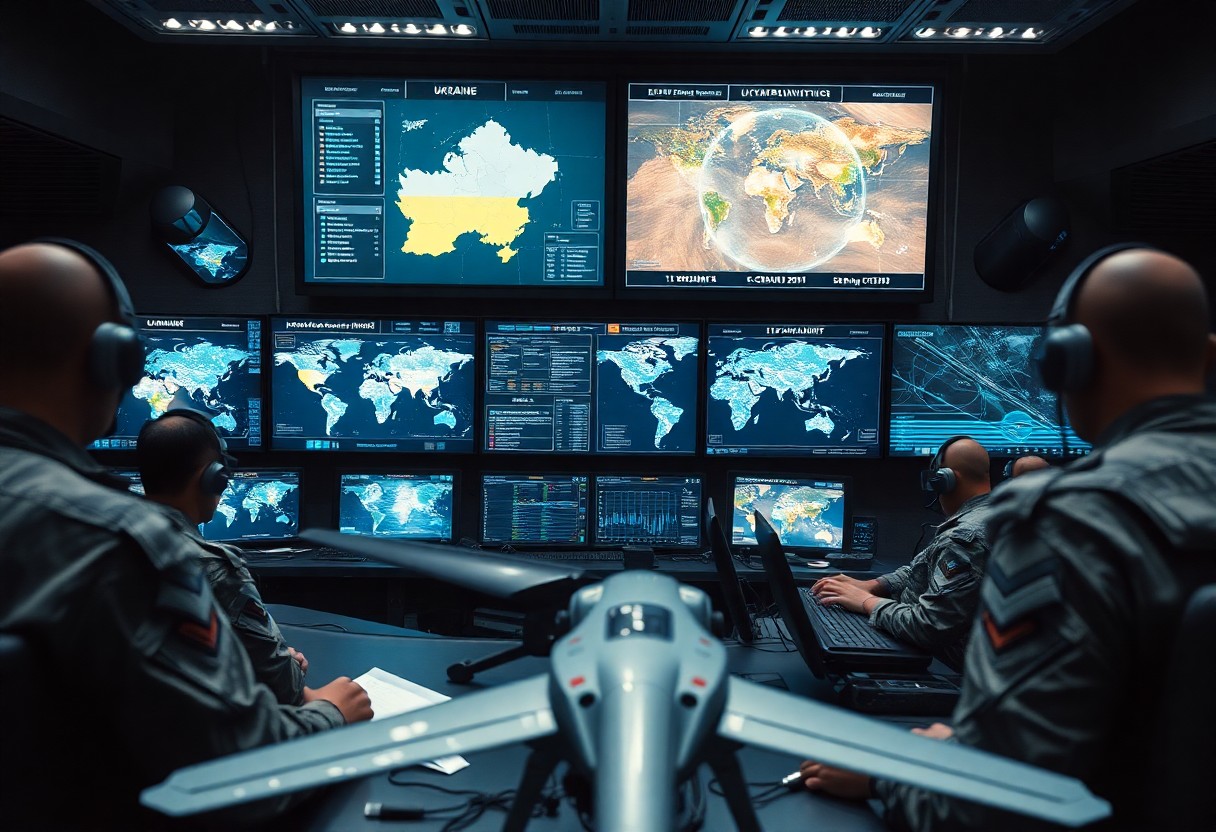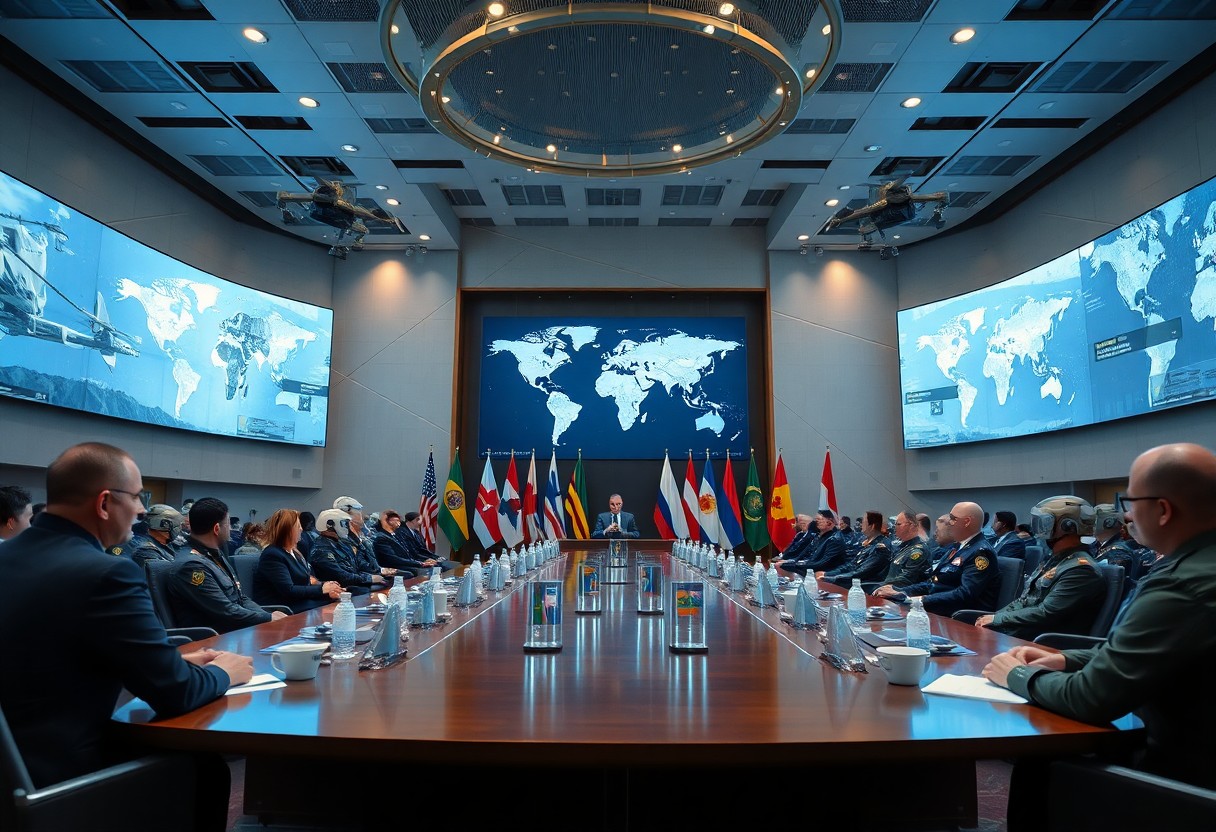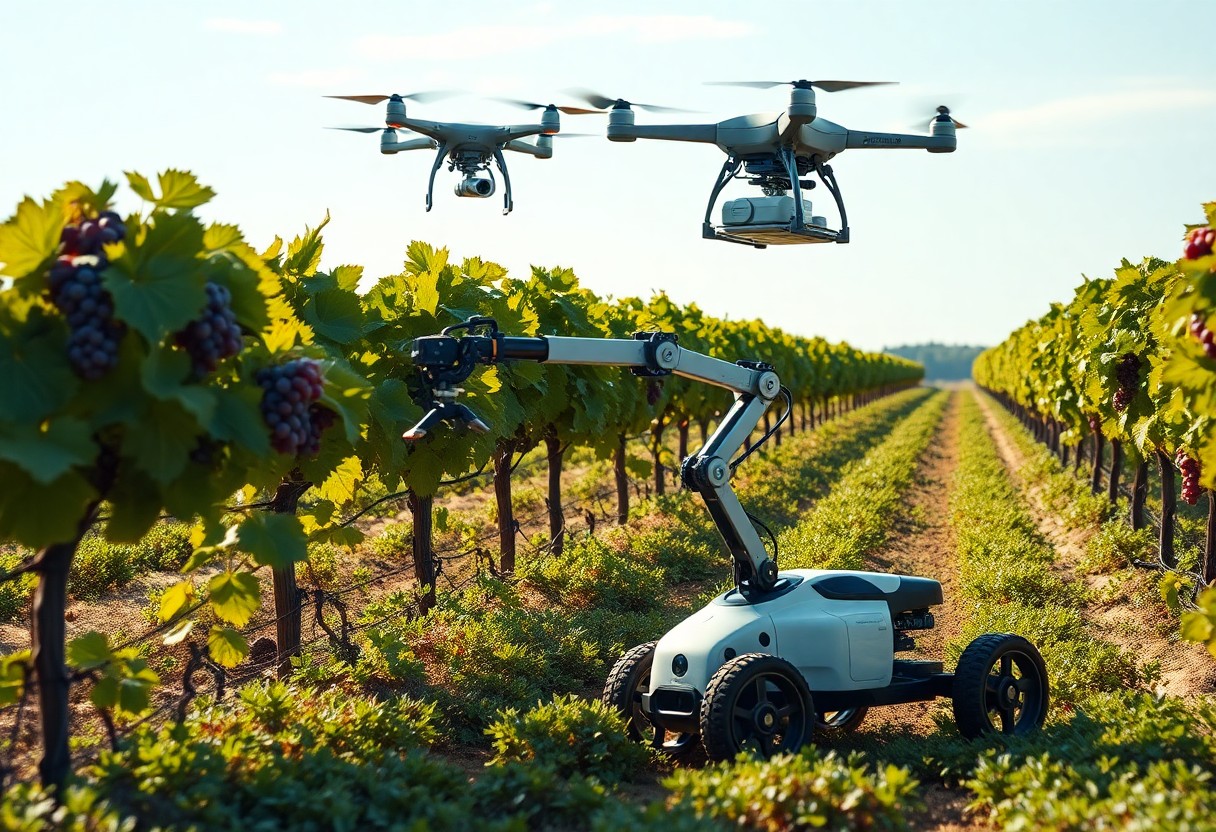It’s imperative for you to understand how advancements in robotics could reshape the geopolitical landscape in the wake of the Ukraine conflict. As nations increasingly rely on automated technologies for defense and intelligence, you may find that power dynamics shift dramatically. This post will explore the potential implications of these advancements on global alliances, military strategies, and national security as countries adapt to an evolving technological frontier. Knowing these trends can equip you to better comprehend the future of international relations in a robotics-driven world.
The Robotics Arms Race: National Defense Paradigms Rewritten
The evolving landscape of robotics is radically transforming national defense, shifting strategies from traditional military might toward technologically advanced, autonomous systems. Nations are increasingly investing in research and development to enhance their military capabilities, leading to a new arms race focused on robotics. As countries like the United States and China prioritize autonomous weapon development, you can expect a redefinition of global power dynamics where military strength is measured not only by personnel but also by technological sophistication and strategic deployment of robotics.
Military Enhancements and Autonomous Warfare
Autonomous warfare is at the forefront of military enhancements, with nations designing systems capable of decision-making without human intervention. Robotics technology enables drones to conduct surveillance, gather intelligence, and execute strikes with lasers and smart munitions far beyond conventional capacities. Your perception of military engagement could shift dramatically as automated systems learn and evolve, posing ethical dilemmas and raising questions about accountability in combat situations.
The Technological Race: Global Players in Robotics Development
Global players in robotics development are fiercely competing to dominate the future of military technology. The United States and China lead in investments and innovations, focusing on the integration of artificial intelligence with robotics to create sophisticated military solutions. Countries like Russia, Israel, and South Korea are also making significant strides, developing unique capabilities tailored to their strategic goals. The drive for supremacy in robotics not only influences military techniques but also shapes international relations as nations align based on technological partnerships and competitive advantages.
This technological race not only symbolizes a shift in how nations protect their interests, but also emphasizes collaboration among allies. For instance, NATO countries are increasingly sharing research while establishing standards for ethical robotics development. Meanwhile, rising powers, like India and Brazil, are entering the scene, aiming to develop their own autonomous capabilities. In response, established powers may enhance their defense alliances, investing in joint projects to stay ahead. Such dynamics will ultimately redefine alliances and rivalries, as nations navigate the fine line between cooperation and competition in robotics innovation.
Economic Power Shifts: Automation’s Role in Geopolitical Strategy
The emergence of robotics is steadily redefining economic power dynamics among nations, with countries that embrace automation quickly gaining a competitive edge. The shift toward automated systems enhances productivity and reduces costs, enabling nations to dominate key markets. Countries investing heavily in robotics technology, such as Japan and Germany, are likely to outpace those lagging behind, disrupting traditional power hierarchies. As geopolitics become increasingly intertwined with technological superiority, nations will leverage automation not just for economic gain, but also as a strategic tool in international relations.
Robotics and Supply Chain Resilience
Robotics technology enhances supply chain resilience by automating production and logistics processes. With automated systems, countries can quickly adapt to disruptions, such as those experienced during the Ukraine conflict. For instance, the ability to deploy robots in manufacturing helps mitigate labor shortages and ensures continuous operation even amidst geopolitical tensions. This strategic shift allows nations to fortify their supply chains, reducing dependency on international resources and safeguarding economic stability.
The Impact on Employment: A Global Perspective
The acceleration of robotics adoption poses significant changes to employment worldwide, fundamentally shifting job roles and skill requirements. As automation takes over routine and manual tasks, labor markets must adapt to decreased demand for traditional jobs while increasing the need for skilled workers in robotics and AI technology. Some sectors may face contraction, but new opportunities can emerge through job creation in high-tech fields. A collaborative approach between governments and industries is necessary to ensure a smooth transition for the workforce.
As countries navigate the complex landscape shaped by robotics, the impact on employment varies widely. For example, while some regions may experience significant job losses in manufacturing, emerging fields in technology could see a surge in demand for skilled workers. The World Economic Forum estimates that by 2025, over 85 million jobs could be displaced by automation, but it also predicts the creation of 97 million new roles requiring advanced skills. Adapting to these changes requires workforce reskilling and upskilling initiatives, along with strategic policies that promote innovation while addressing societal challenges related to employment. The geopolitical implications are profound, as nations that proactively manage these transitions may find themselves more competitive on the global stage, enhancing their economic influence and stability.

Cybersecurity Vulnerabilities: New Frontiers of Geopolitical Tension
The integration of robotics into military and infrastructural frameworks introduces significant cybersecurity vulnerabilities that can trigger geopolitical tensions. State-sponsored actors are increasingly able to exploit weaknesses in automated systems, leading to escalated global conflicts. As nations enhance their reliance on robotic technologies, safeguarding these systems becomes paramount, as any breach can result in devastating consequences—not just for individual nations, but for international stability as a whole.
Robotics and Network Security Risks
Your reliance on robotics may expose entire networks to unprecedented risks, particularly as operational systems become more interconnected. For instance, a breach in an autonomous drone’s network could allow hostile actors to hijack control, potentially wreaking havoc in conflict zones or even civilian areas. The 2020 attacks on gas pipeline infrastructures through compromised control systems starkly highlight the potential chaos that robotics can bring into the cybersecurity domain.
The Role of AI in Geostrategic Cyber Conflicts
AI’s integration promises to alter the landscape of cyber warfare, turning traditional conflict frameworks on their head. By leveraging machine learning algorithms, state actors can conduct cyber attacks with increased precision, targeting specific vulnerabilities in robotic systems, communications infrastructure, and intelligence databases. This capability enhances not just the effectiveness of attacks but also the speed at which nations can respond to perceived threats, resulting in a fast-paced, high-stakes international arena.
AI’s ability to “learn” from previous cyber engagements allows nations to anticipate and preemptively strike against vulnerabilities in rival states’ infrastructures. For instance, AI-driven simulations can uncover weaknesses in robotic military systems before they are deployed, enabling nations to preemptively mitigate potential risks. Recognizing this trend, states that prioritize AI development in their cyber strategies can gain significant geopolitical advantages. Efforts to establish international cybersecurity norms may also become a priority as nations grapple with AI weaponization and its implications for future conflict. In your professional or personal spheres, being cognizant of these emerging dynamics can enhance your strategic awareness of global security challenges tied to robotics and AI.
Soft Power and Global Influence: Robotics in Diplomacy and Humanitarian Aid
Robotics stands to reshape the way nations engage in diplomacy and humanitarian efforts, acting as a potent form of soft power. As countries deploy robotic technologies to assist in disaster relief or peacekeeping operations, the global perception of their commitment to humanitarian values improves. Such technologies can facilitate faster responses to crises, reinforcing a nation’s image as a responsible global leader. The diplomatic narrative now often includes technological prowess, and countries leveraging robotics effectively are likely to enhance their standing on the world stage.
Humanitarian Robotics: A New Tool for Diplomacy
Innovations in humanitarian robotics have emerged as vital assets in crisis zones, enabling more efficient aid delivery. Drones, robotic aid packages, and telepresence robots are deployed to assess damage in disaster-stricken areas or deliver necessary supplies to inaccessible locations. By utilizing such technology, nations can showcase their ability to respond to humanitarian needs swiftly, fostering goodwill and strengthening international ties.
National Reputation: The Image of Technological Advancement
Your country’s reputation increasingly hinges on its technological capabilities, especially in robotics. Nations leading in robotics development can project an image of innovation and readiness, which enhances their global influence. By showcasing advancements through collaborations with other countries or involvement in international humanitarian missions, your nation positions itself as a forward-thinking player. Case studies of countries like Japan and the U.S. highlight how technological prowess translates into soft power—countries that excel in robotics not only attract investments but also forge stronger diplomatic relationships through shared technological initiatives.
The Ethical Quagmire: Navigating the Moral Implications of Robotics
The rise of robotics in military and civilian applications poses a myriad of ethical dilemmas that can redefine global norms. Your perception of robotics may shift when considering the extent of their autonomy in decision-making, particularly in conflict scenarios. These advances prompt critical questions about accountability, human rights, and the potential for dehumanization within warfare. How societies navigate these ethical challenges will significantly influence international relations and public trust in technology.
Autonomous Decision-Making and Human Rights
As robots increasingly assume roles in defense and surveillance, autonomous systems may make life-and-death decisions without human intervention. This raises urgent concerns regarding the safeguarding of human rights. You might wonder, who is held accountable if an autonomous drone makes an erroneous strike? In an armed conflict, the displacement of moral responsibility can lead to violations of international law, posing risks to civilians and exacerbating humanitarian crises.
Global Regulations: The Challenge of Harmonizing Standards
Establishing global regulations for robotics remains exceptionally complex. Different nations have diverse legal frameworks governing technology, leading to inconsistencies in robotic deployment and ethical standards. You may find that the lack of a unified approach hinders collaboration and increases geopolitical tensions as countries race to develop advanced military technologies without consistent guidelines.
The challenge of harmonizing international regulations is evident in ongoing discussions among countries like the United States and China, where competing interests often conflict. Nations are left grappling with the balance between innovation and ethical considerations; for instance, the UN has proposed various frameworks for lethal autonomous weapons systems, yet many nations remain reluctant to agree on measures that could limit their strategic advantages. A successful regulatory framework would require not just legal compliance, but the commitment of all nations to uphold shared ethical standards, which in itself is a significant hurdle given the current geopolitical climate.
Summing up
From above, you can see that robotics may significantly reshape the geopolitical landscape in the aftermath of the Ukraine conflict. As nations invest in advanced robotic technologies for defense, surveillance, and logistics, your perspective on military strategy and diplomatic relations will likely shift. These advancements can lead to new power dynamics, encourage arms races, and even alter alliances as countries strive to maintain their sovereignty and national security. Staying informed on these developments will be imperative as they unfold and influence global interactions in the coming years.







